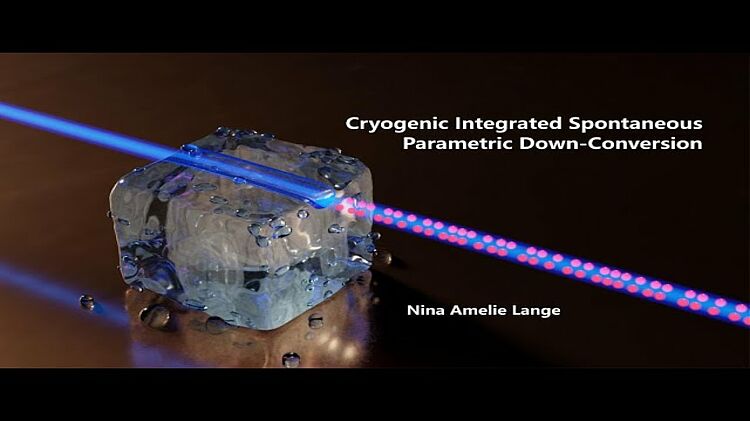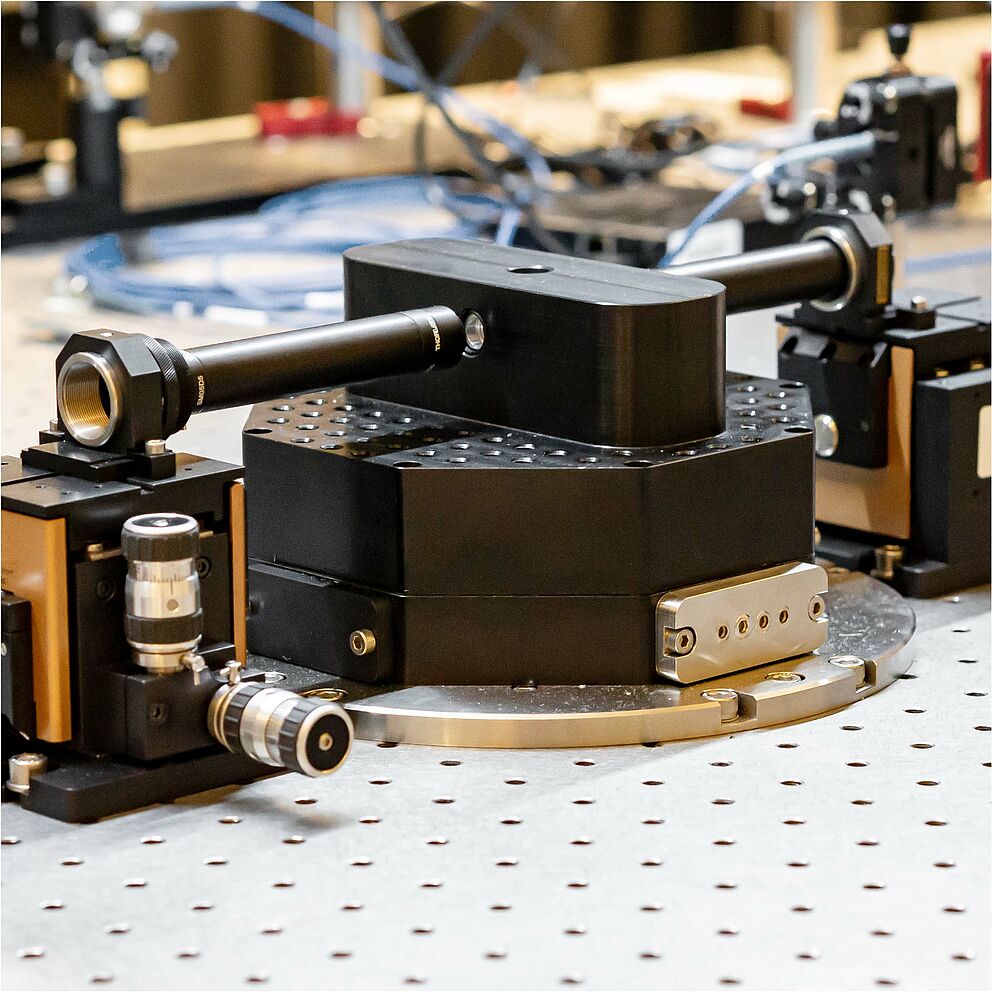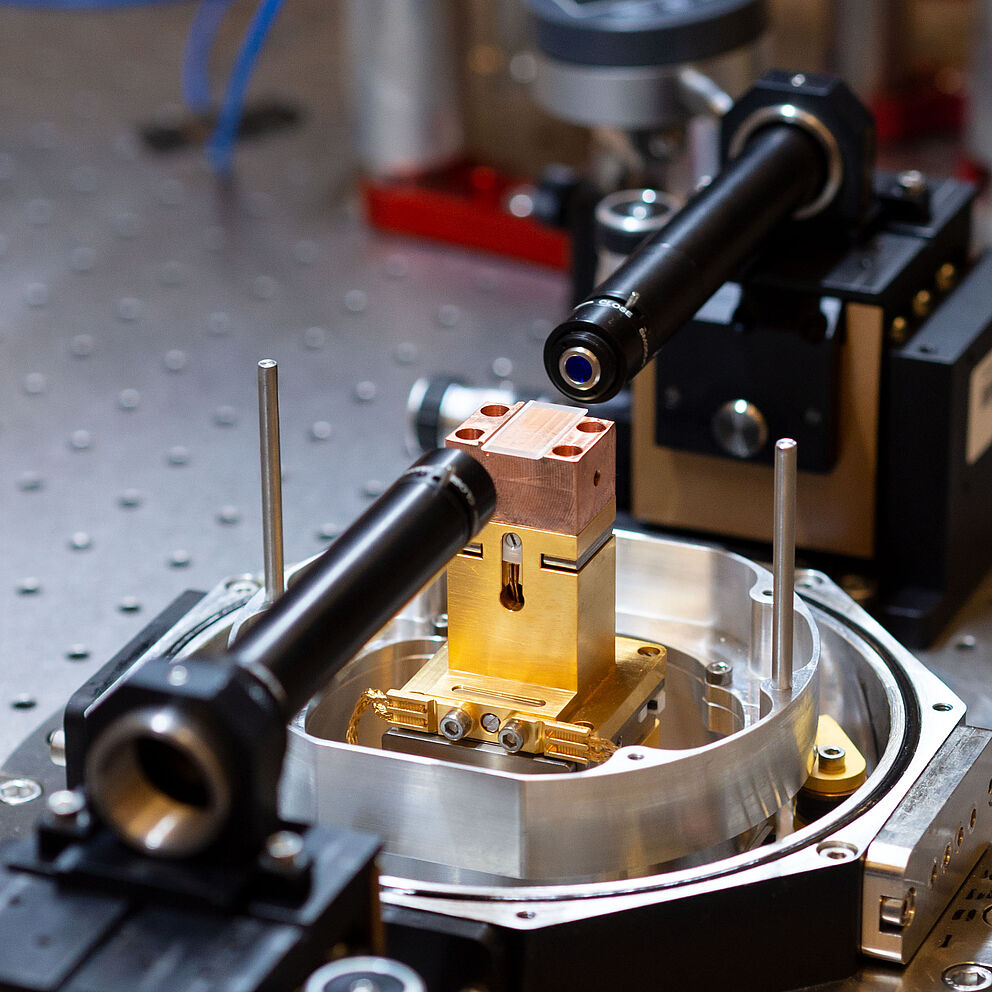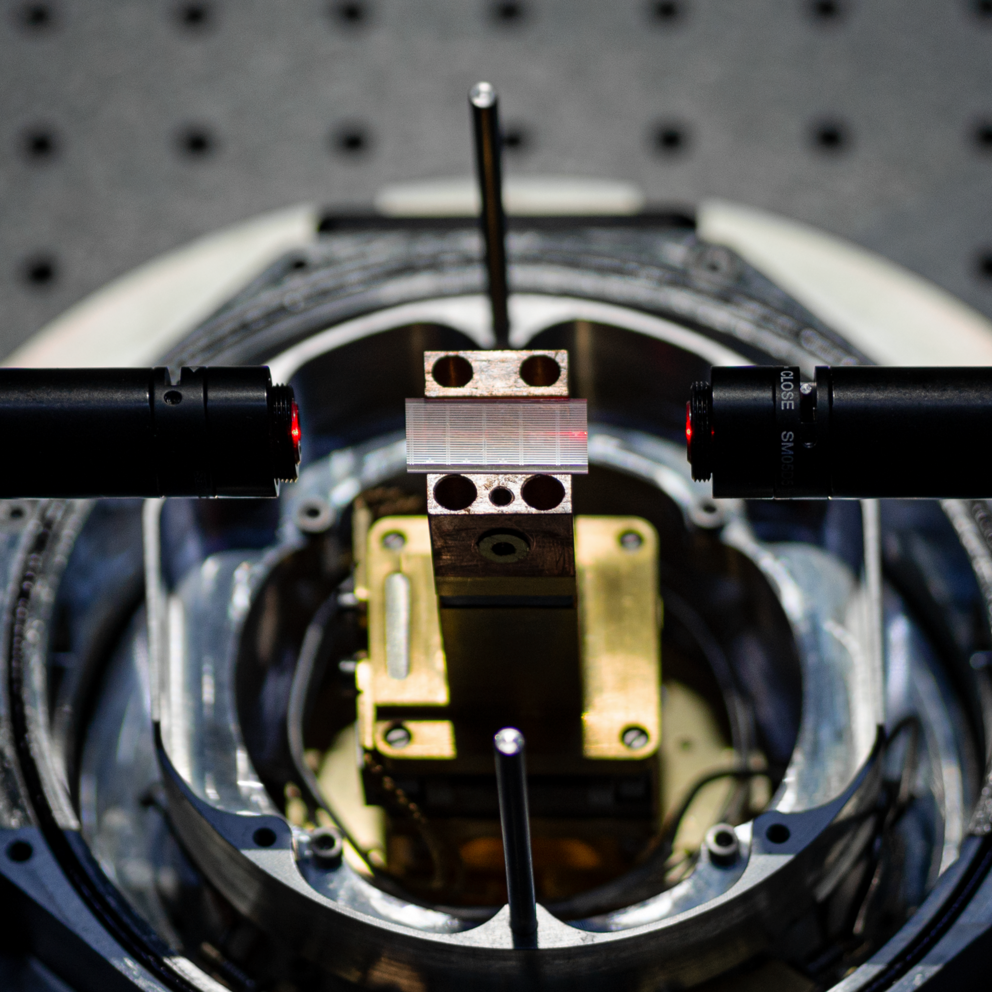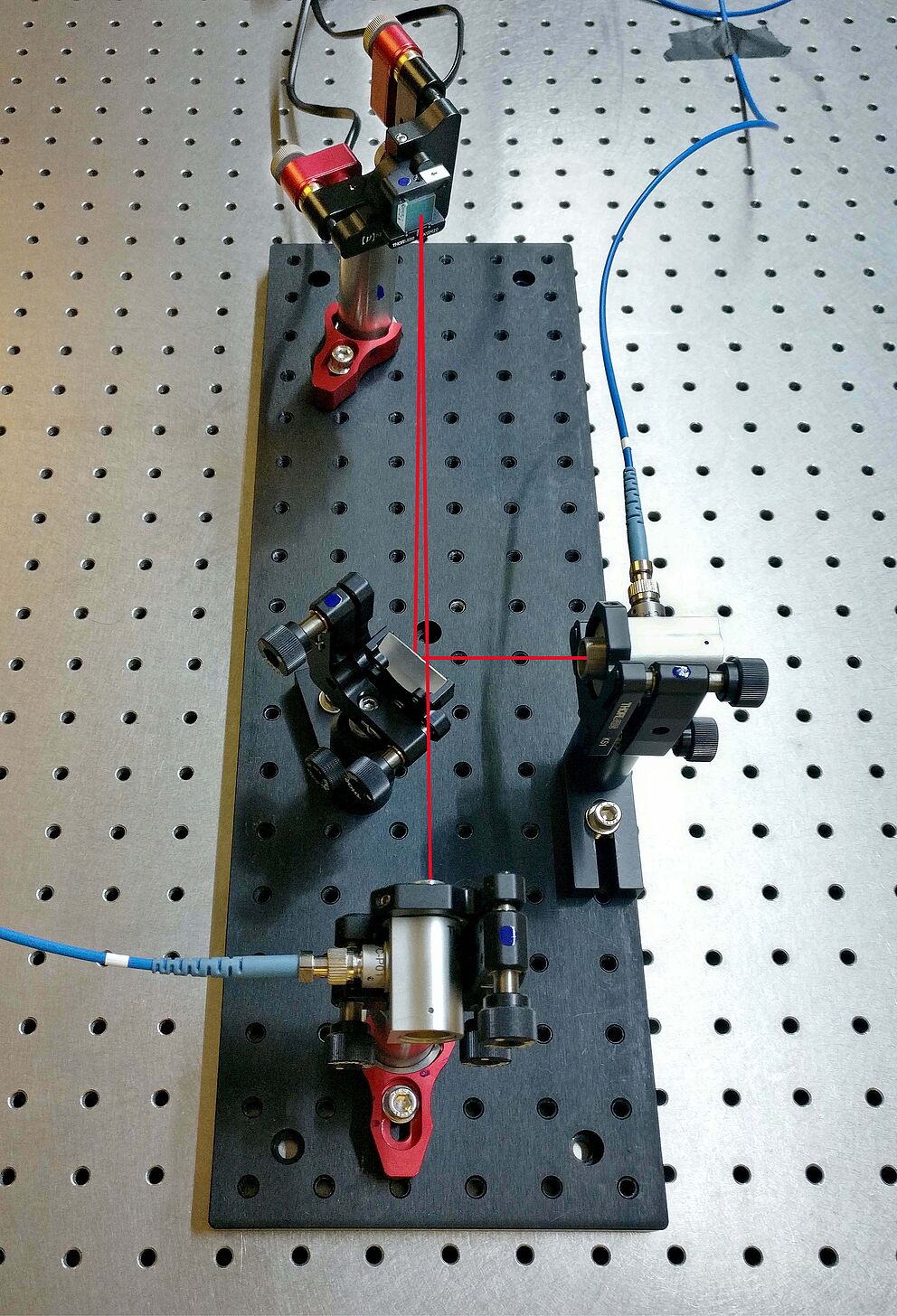Let’s cool it down – The coldest SPDC experiment
We did the coldest Spontaneous Parametric Down-Conversion (SPDC) experiment that was done so far! This page will explore Nina’s project and tell you everything you need to know.
If you are interested in any more details, please have a look at the referenced publications listed below. We show the proof-of-principle investigations of cryogenic SPDC in our Optica paper and demonstrate a cryogenic degenerate SPDC source in our second paper published in PRA
Stop right here, if you would rather watch a video
We produced a video about our results published in the first paper. You can watch it right here. But be sure to check out our YouTube channel for more content and other projects.
Keep on scrolling, if you want to learn more about this project and gain some insights about our
- Experimental setup
- 4 K cryostat
- Cyrogenic degenerate SPDC source
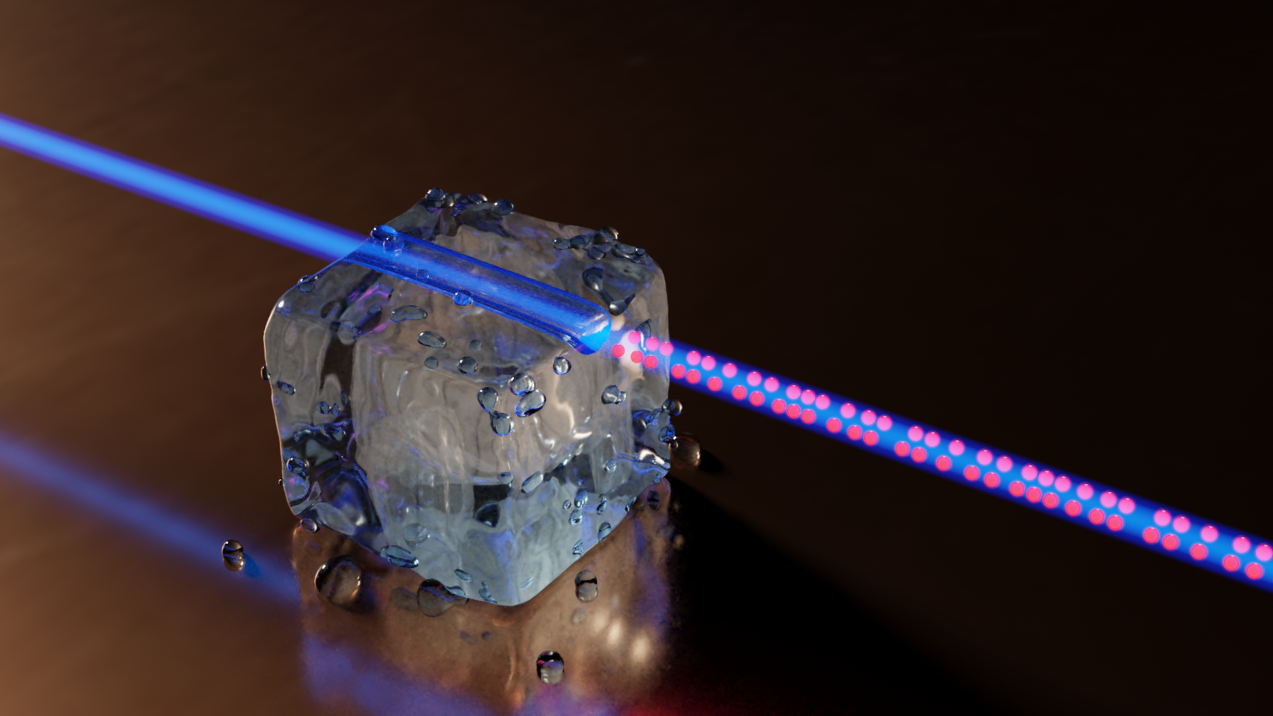
Let’s start with the basics
SPDC is a well-established technique for nonclassical light generation. One photon from a strong pump beam decays into two daughter photons when traveling through a nonlinear crystal. That way we can generate pairs of single photons. This process is normally performed at room temperature or above. In contrast, we cool our integrated SPDC source down to a few Kelvin and investigate the cryogenic performance. We show that the SPDC source stays completely functional and we have good control over the cryogenic source design.
What’s our material platform? We realize the SPDC in in-house fabricated periodically poled titanium indiffused lithium niobate waveguides. It is a quasi-phase-matched type-II process, which means the generated photons are orthogonally polarized and can be separated with a polarizing beam splitter.
Why we do cryogenic SPDC
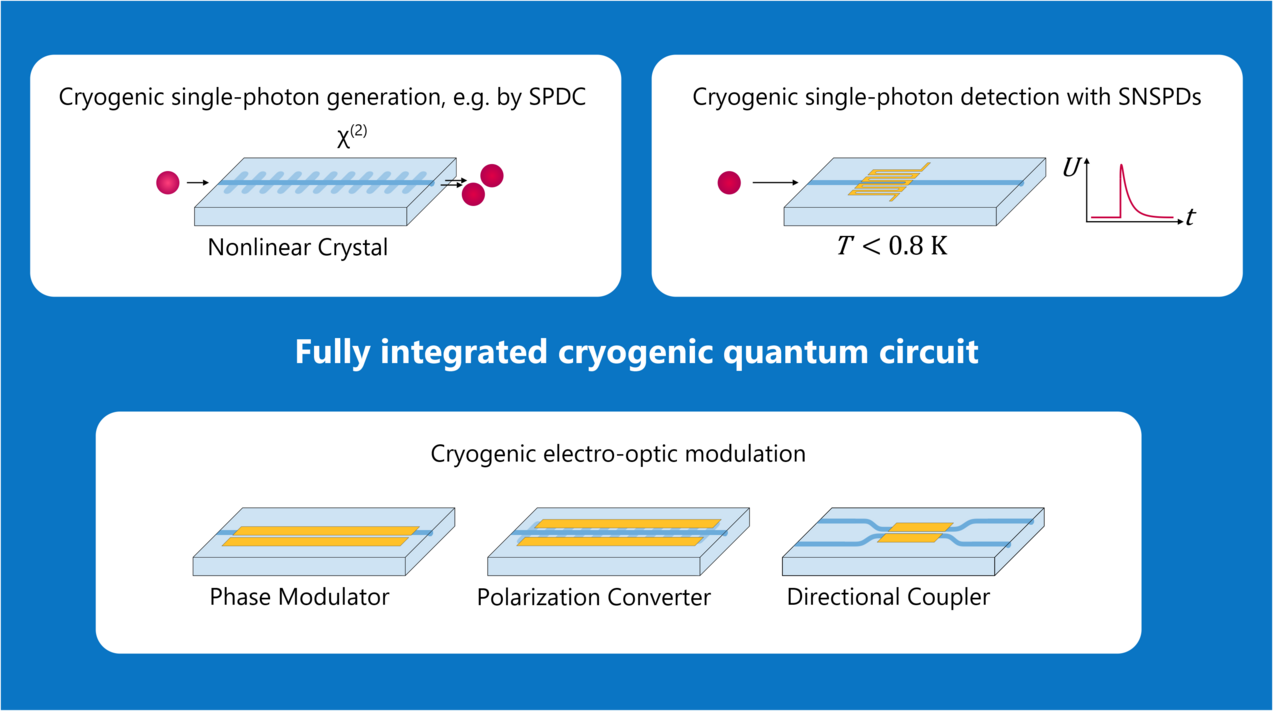
Since SPDC has already proven great performances under ambient conditions, a question we are often asked is “what is the advantage of cooling down the source?” Unlike what one might expect, our motivation is not the intrinsic changes in the source material; we want to make SPDC compatible with other integrated components that require cryogenic operation. One important example are superconducting detectors such as Superconducting Nanowire Single-Photon Detectors (SNSPDs). These are the golden standard for single-photon detection, providing, among others, near-unity detection efficiency. By verifying compatibility of SPDC, and other integrated components such as modulators, with cryogenic devices, we develop a toolbox for realizing a fully integrated cryogenic quantum circuit.
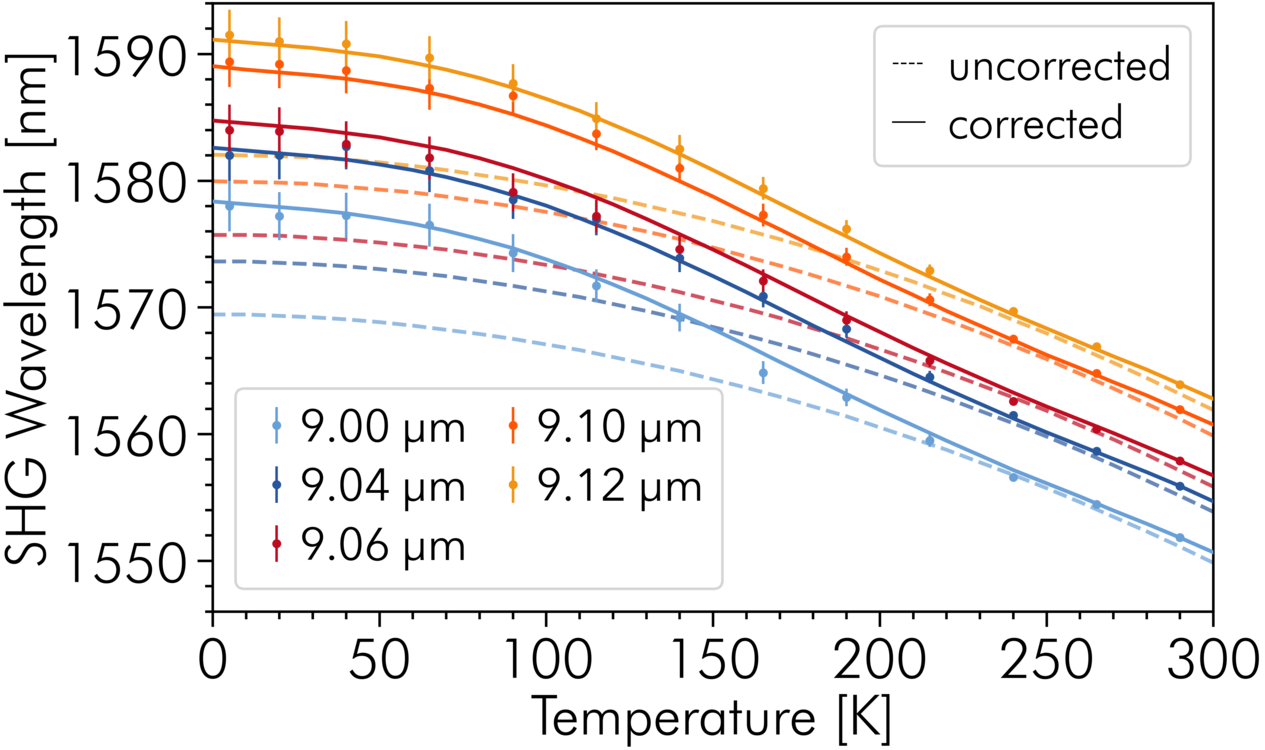
What changes when we cool down the SPDC source?
The properties of the daughter photons, e.g. their central wavelengths, depend on the pump beam (energy conservation) and on the phase-matching (momentum conservation). The latter is given by the poling period, which is a parameter that is fixed during fabrication. To define the required period, we thus need a precise model describing our system. We note that the strongest change with temperature happens for the refractive indices of our waveguide modes, causing a shift in the phase-matching. Unfortunately, no precise data exists for the cryogenic refractive indices, so we investigated this shift by measuring the Second Harmonic Generation (SHG) wavelength during a cool down. This measurement allowed us to modify our initial model, which predicted a smaller shift than we observed in the experiment. With this corrected model, we can describe the temperature dependent wavelengths of the SPDC photons very well.

Closer look at the cryogenic phase-matching
The spectral measurement of the cryogenic SHG reveals the central phase-matched wavelength. Since SHG is the reverse process of degenerate SPDC (degenerate means that the generated photons have the same energy), the phase-matched wavelength is the same for both interactions. This means that the pump wavelength, for which we get the highest SHG power, corresponds to the wavelength of the generated SPDC photons in a degenerate process. We thus know that we get degenerate photons if we pump the SPDC process with twice this energy. The measured wavelength agrees very well with our theoretical predictions.
Furthermore, the spectral shape of the cryogenic SHG is very close to the ideal shape (which is a sinc squared function). This overlap verifies an accurate and uniform fabrication of the poled waveguide in our cleanroom.
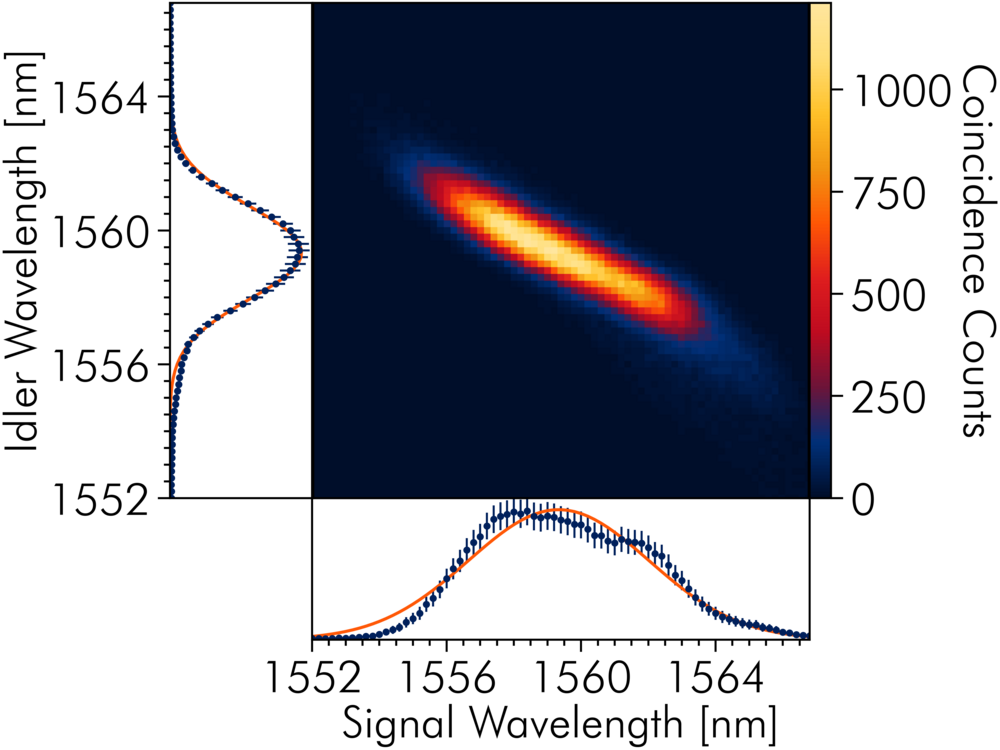
Spectral properties of our SPDC source
The measurement of the joint spectral intensity (JSI) demonstrates that both photons (called the signal and idler) are centered around the wavelength we observed for the SHG spectrum. Moreover, it shows the spectral correlations of our source, given by the elliptical shape of the JSI.
In addition to the spectral properties, we characterized the source brightness, Klyshko efficiency, and heralded autocorrelation function at cryogenic temperatures to demonstrate the single-photon generation.
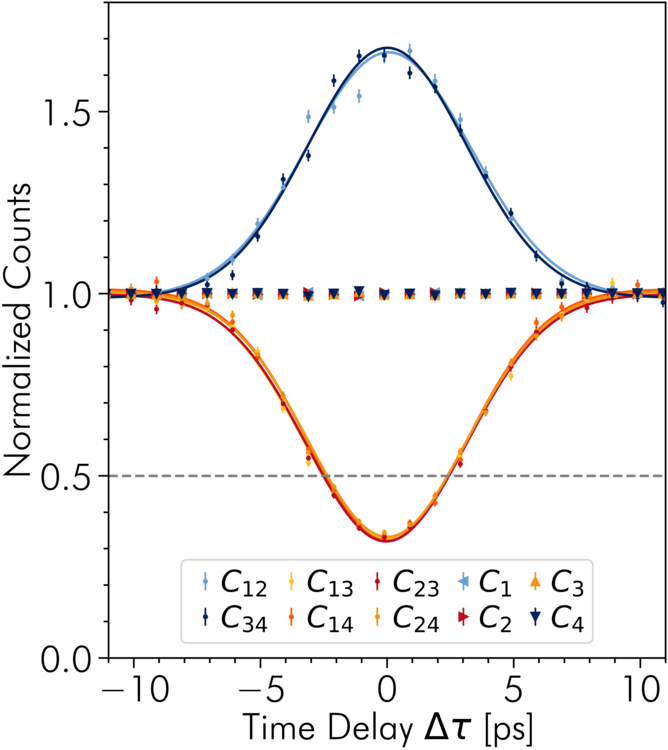
Can we get indistinguishable photons from our source?
We performed a Hong-Ou-Mandel (HOM) interference measurement on our source to check how identical the photons are. For this we applied spectral filters in both arms to reduce the spectral correlations. This way we measured a HOM dip below 50 %, which verified the bunching and thus indistinguishability of the two photons.
Take-Home Message
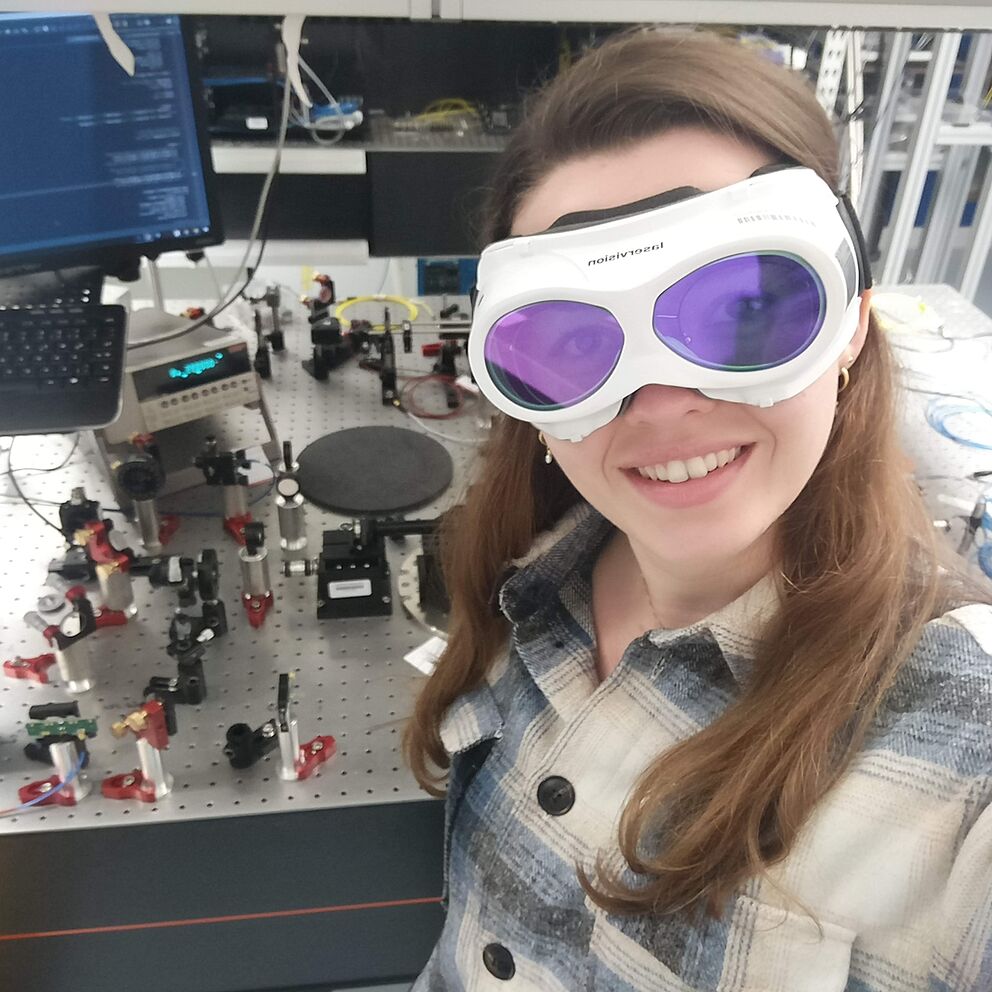
What should we take home?
Our results demonstrate reliable control of the cryogenic SPDC process. With our corrected model we can precisely predict which poling period needs to be fabricated for cryogenic phase-matching.
Why is that?
The uniform SHG spectrum verifies accurate waveguide fabrication and periodic poling. The degenerate photon pairs from our source agree very well with our design wavelength. This means we can generate indistinguishable photons with additional filtering.
These are the relevant publications
Cryogenic integrated spontaneous parametric down-conversion
N.A. Lange, J.P. Höpker, R. Ricken, V. Quiring, C. Eigner, C. Silberhorn, T. Bartley, Optica 9 (2022).
Degenerate photons from a cryogenic spontaneous parametric down-conversion source
N.A. Lange, T. Schapeler, J.P. Höpker, M. Protte, T. Bartley, Physical Review A 108 (2023).
Show all publications

